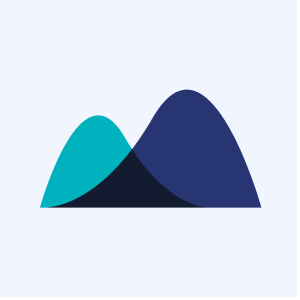Increase Your Hotel's Turnover with Accurate Demand Forecasting
Accurate demand forecasting is a crucial part of effective revenue management for every hotel.

When it comes to setting and adjusting room rates, intelligent software like Smartpricing can crunch huge amounts of data on your behalf, then automatically optimize and publish rates based on demand.
This article is for any hotel managers or owners that want to understand how demand forecasting works and, crucially, how to analyze forecasts effectively.
Let's begin!
What is the benefit of forecasting demand?
A demand forecast is simply an estimate of the demand you expect to have during a given time period. Accurate forecasts are important, because they allow you to optimize your rates for maximum income.
If you know in advance what the booking trend will be during a given period, you can establish highly profitable rates for your hotel that are also attractive to customers.
You can afford to raise prices if you know demand is going up and lower them again when demand eases off.
The real question is: how is forecasting actually done in practice? Well first things first, you need to do some analysis.
Analyze your booking history
Start by examining your historical booking data.
You can find this data (ideally over several years) within your management system or the “Reservations” area of any OTA.
Looking at these numbers, you get an instant estimate of your busiest and quietest times of the year. The main factor to consider is occupancy rate—the percentage of your property’s rooms booked at a given period.
The occupancy rate can show you, for example, whether your property is affected by seasonality; that is, if there are months of the year when you systematically gain or lose bookings, compared to the average.
Or you might learn that some days of the week are noticeably busier than others.
The information you derive depends on your property: its location, your customers, the experience enjoyed, local attractions etc.
A hotel in a seaside resort famously has its peak season during the summer months; for a ski resort, it’s clearly the winter months.
Similarly, a property geared towards leisure travelers will have a higher occupancy rate on weekends, while those catering to corporate customers will be busier during the week.
You should also pay attention to cancellations and no shows and assess their impact on occupancy rate.
By observing all of this data, you can create a reasonable estimate of future booking activity, which will allow you to more reliably tinker with rate changes.
However, you can forecast demand more accurately by expanding beyond your own internal data!
Analyze your competitors
Analyzing the local competition basically means understanding the market you’re in.
If you notice that your competitors (i.e. those offering a similar service, to a similar demographic) are raising their prices for a certain period, you might infer that demand is increasing and make your own changes accordingly.
You can do the same thing when rates are lowered. Learn more about the powerful skill of competition analysis for revenue management.
Stay familiar with local events and trends
Events regularly cause a spike in demand for rooms in your hotel or bed & breakfast.
Some are easily predictable because they happen regularly and, based on your historical data, you can predict a certain amount of demand.
For example, if there’s an important congress that takes place in your city every year, in the same month, and always attracts thousands of business travelers, then you can plan for this demand quite safely.
Other events are sporadic, such as major sporting events or concerts. These can drive enormous demand, but you need to be on your toes and prepared for them in advance. Failure to forecast this demand means you’re likely to sell your rooms too cheaply and miss out on profit.
Keeping your ear to the ground and leveraging this data could be extremely lucrative work!
Prepare for the unexpected
It’s an unfortunate reality that all of your analysis can fail in the face of unexpected events that upset travel plans.
By definition, these events cannot be predicted. However, you can still estimate their effects on bookings if you look at them carefully.
One major example of a sudden event is the Covid-19 pandemic which, at least for the summer of 2021, rendered any historical booking analysis (pre-2020) virtually worthless.
What you can do is react quickly and observe trends expected for the next few months, and use them as your basis for forecasting. You can apply this strategy to various unpredictable situations.
Long-haul transport, for example. Air traffic slowed down immediately after the 9/11 attacks, and halted entirely across Europe with the eruption of an Icelandic volcano in 2010.
Then there are meteorological conditions. The weather is of crucial importance, especially for seasonal properties: a week of unexpected chilly rain in a seaside resort can cripple demand.
But we should note that unexpected events do not always mean negative ones.
Weather conditions can be more favorable than expected—for example, an unseasonably hot and sunny November—and keep the occupancy rate high beyond the peak season.
And if limited air travel stops travelers going abroad, local hotels and B&Bs are likely to see a surge in demand. After all—people still want their holidays!
The important lesson is that you should always pay close attention to changes that might affect demand—and then rapidly adjust your rates as needed.
Determine the best rates to fit your demand forecast
Once you’ve done all the necessary analysis and observation, you can start predicting how many rooms you’re likely to sell in a certain period.
One useful piece of advice is to make both a very optimistic and a very pessimistic estimate, so that you’re prepared for the best and worst-case scenarios.
Another tip is to segment your forecasts. That is, divide them into the following four categories:
- Geographical origin of the guests
- Booking channel (OTA or direct)
- Type of room
- Type of client (business, leisure or other)
For each of these segments you can forecast demand and adapt your prices accordingly.
Estimating room demand also allows you to estimate turnover and see whether that figure aligns with your goals.
If your estimate falls short, it’s time to drive additional bookings by lowering prices or investing in marketing to reach more prospects.
Now, you can do all this on your own. But it’s not easy. It’s time-consuming and, most of the time, less-than-perfectly reliable.
Your other option is to let Smartpricing manage your forecasts!
Smartpricing is a fully-automated revenue management software that’s smart, effective, and easy to use.
The system analyzes data from a huge number of relevant sources and generates the best rate for your property without you wasting any time or energy wielding complicated Excel sheets.
Dozens of our customers have seen their turnover grow up to 30% thanks to Smartpricing. Are you ready to join them?
